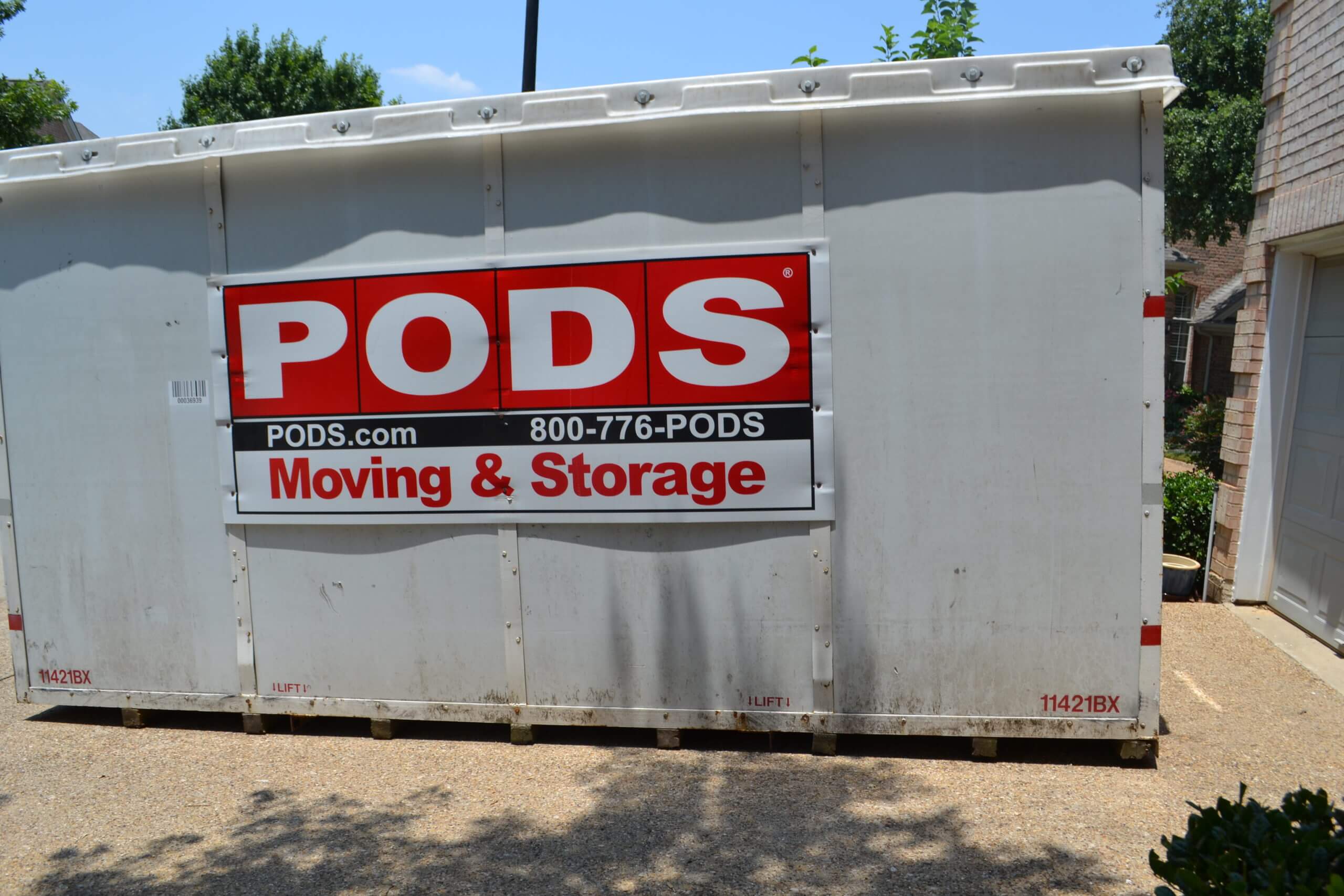Having used PODS for storage and moving, I feel somewhat qualified to share pods packing tips learned from the packing and shipping experience. An obvious tip I can give you right off the top of my head is that — even if you THINK your belongings are going to be in storage for a brief amount of time, plan for the worst. Hold onto a few of your favorite items in the off chance that life happens and you’re not getting that storage container back as fast as you were hoping.
The last time we packed up our household, we were preparing to sell our home and buy a new one. The market was hot, we were in a good location, it should have taken — at most — a couple of months. Plot twist: We ended up building a house and the process took months. Months of separation anxiety, as I wandered around my empty house and sad closet looking for things that had been packed away weeks ago (namely my favorite fall boots).

So that’s your first extremely valuable tip. For some others, including types of storage containers and what not to pack in PODS, I reached out to my friend Jeff with Berger Allied Moving & Storage. Jeff is a verified expert as he’s been in the moving business for over 25 years. He kindly shared his time and practical PODS packing tips that will be useful for anyone planning extended storage or a house move.
Portable Storage Containers (AKA PODs) – Everything You Need to Know
WHAT TIME OF THE YEAR IS WORST FOR MOVING WITH PODS?
The worst dates and highest prices are between Memorial Day weekend and Labor Day weekend, and then right after school ends in June and into July. 2020 with COVID was not a good representation of a normal moving year. (I mean, is anything considered “normal” in 2020?!)
TEMPORARY STORAGE CONTAINER OPTIONS
There are two main types of temporary storage:
• DIY: The customer does all the packing and loading of their household goods into the container(s), and then the storage container company picks up and delivers the container to the customer’s new residence, or they put it in storage until the customer needs it delivered to them at a later date.
• Full Service: The storage container company does all the packing and loading for the customer, and then delivers the container(s) to the customer’s new residence, or they put the container in storage until the customer needs it delivered at a later date. (<– This is Jeff’s specialty.)
Noteworthy:
• Most companies will have a minimum storage requirement (i.e. one month)
• Estate Storage: Storage containers are a popular option for storing items from an estate.
• Renovation Storage: Storage containers are also good for when a customer needs to temporarily move furniture out of a room of their home (for example, to do a renovation or repair, etc.). Items can either be stored in the container in the customer’s driveway (provided their community HOA allows that) or taken to a warehouse for temporary storage. The container can then be delivered back to the customer when they need it.
HOW TO PACK A TEMPORARY STORAGE CONTAINER
• Make sure you select the right size container for your goods so you can fill it completely
• Load contents from the bottom up
• Place heavier items and furniture at the bottom and lighter items at the top (boxes, totes, etc.).
• Fill gaps with miscellaneous items, blankets or even empty boxes—you don’t want a lot of open spaces as things will shift around in transit
• Protect delicate items with packing materials (I have some suggestions with links)








WHAT NOT TO PUT IN A STORAGE CONTAINER
• Liquids
• Flammables and combustibles like gasoline, propane, butane
• Cleaning supplies
• Paint
• Plants
ARE STORAGE CONTAINERS CLIMATE CONTROLLED?
• No, storage containers aren’t climate controlled however, most furniture and household items stored in containers can withstand the warm or cold outside temperatures for months at a time
• Once the container is moved to warehouse storage, some warehouses are temperature controlled
WHY DO YOU HAVE TO MAKE AN APPOINTMENT or PAY A FEE TO GET CONTENTS FROM YOUR CONTAINER ONCE IT’S STORED?
• The full-service storage containers are generally stored in warehouses
• They are usually stacked or positioned so they aren’t easy to access – especially those stored for long term
• There’s a process for the company to access your container and move it to a safe zone for you to then access it
• The process is time-consuming and can be a hazard for renters to access without proper clearance
ABANDONED STORAGE
What happens if I don’t want the contents in my storage container anymore?
• Storage container companies are not allowed to get rid of a customer’s stored property should the customer no longer want it. The customer has to remove it themselves.
• Storage container companies CAN auction off a customer’s property if the bill hasn’t been paid but they prefer not to go to auction because of the legalities and expenses involved
REMINDER: Moving and storage times are always great times to get rid of stuff that you no longer use!
You can contact Jeff with questions or to schedule full-service temporary storage, or move anywhere in the US by email at: [email protected]. Tell him I sent you!


 What’s your happy place? Crafting? Cooking? Cocktails? Party planning? Yes please! I love it all, and I’ve tried a lot. Check out my how-to’s! What should we do next?
What’s your happy place? Crafting? Cooking? Cocktails? Party planning? Yes please! I love it all, and I’ve tried a lot. Check out my how-to’s! What should we do next?


0 Comments